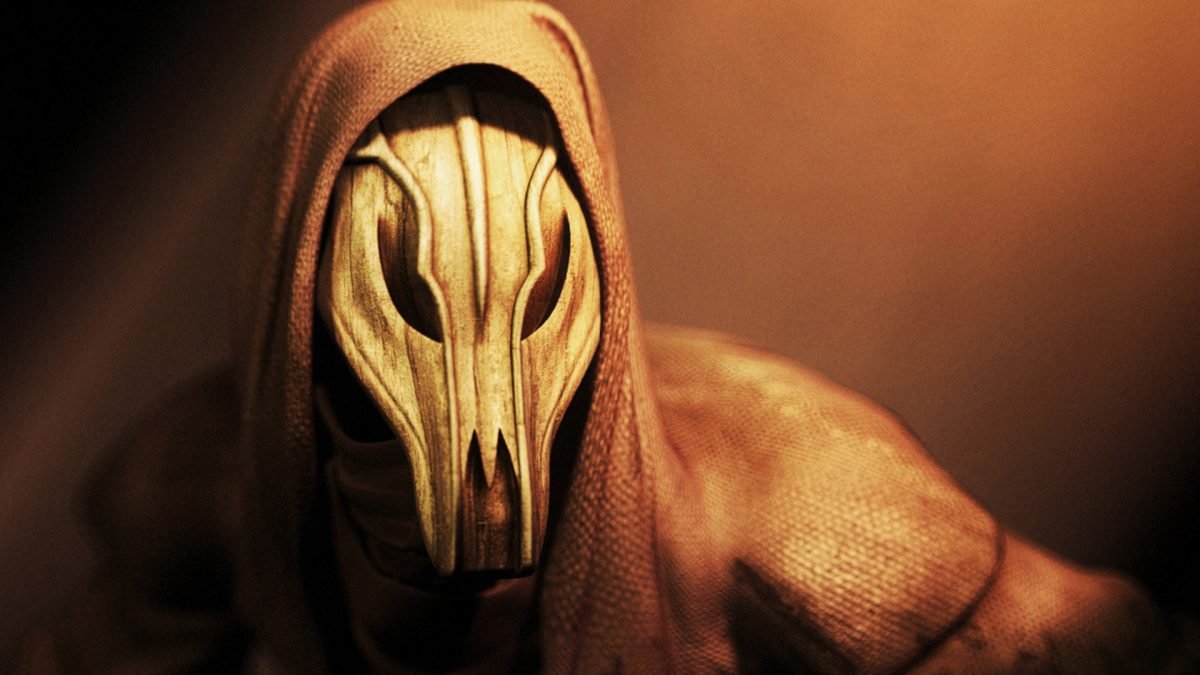A cult is, in the strictest of definitions, a religious organization that idolizes a certain object, whether it’s a biological organism or the daughter of the President of the United States. In video games, meanwhile, a cult is a classic antagonist made to exist on the other side of our moral spectrum, and a good one challenges our way of thinking and our way of playing. Many of these cults participate in unthinkable acts of tyranny and brutality and the player is set up to oppose them.
So in that spirit, here’s a list of gaming’s greatest cults, organized according to threat level. Keep in mind that numbers don’t always make the cult, nor is menacing appearance always the greatest indicator of danger. A cult is the embodiment of an idea that players must destroy for points (or for an ending cinematic), and these cults are all about influence. It’s up to us to decide if their motives are truly evil, but these nine certainly approach that line.
[Spoilers Ahead. You have been warned.]
Happy Happyism Cult – Earthbound, SNES 1994.
It isn’t everyday that you find a commune run by cultists, especially ones that are as “happy” as the individuals in the Happy Happy Village. Then again, cult leader Mr. Carpainter believes that painting the world blue will make for a happier place (unity through colour), and he has absolute control over his village and any unwary travellers who pass through.
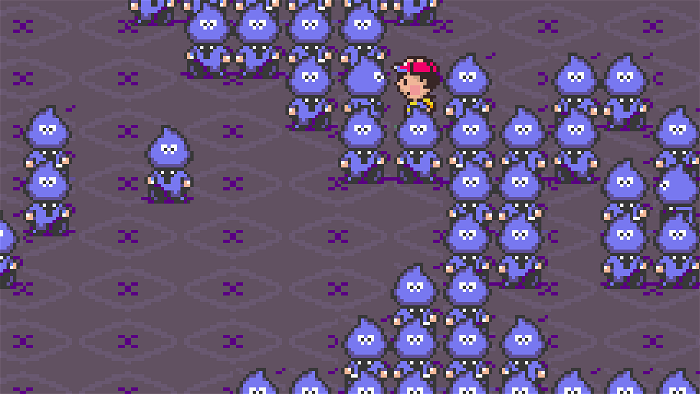
In Earthbound, Mr. Carpainter kidnaps Paula to use her as the high priestess of his new world order of the colour blue, and while I’m not sure how having her at his side would help create more blue, it’s a case of possession instead of a cult leader trying to do actual harm to the player. Still, it’s an odd situation to throw a child into, but that’s the Mother series for you.
Ness is thankfully able to oppose Mr. Carpainter with the freewill of the player, and after the fight is over, the cult leader drops his peculiar behaviour and blames it on a golden statue he bought from Lier X.
Do you see the Mani Mani statue behind me… since I got the statue, I’ve been doing peculiar things. Please forgive me if you can… I just wanted to have a normal life. I apologize to everyone.
The Mani Mani statue is Gigyas, an antagonist who intends to spread evil throughout the world. The statue brings out the worst in people and causes them to act irrationally and…well…paint things a nice shade of blue. After Mr. Carpainter loses the statue, the Happy Happyism cult is disbanded, but the player is still left with a few questions.
Specifically, how does painting the world blue make it into a happier place? You could construe it as a metaphor – blue is usually associated with sadness – or you could say that colour represents uniformity. Whatever the case, Mr. Carpainter and his cabal challenge Ness’s understanding of the vibrant world around him, and in a video game so full of colour the Happy Happyists stand in opposition to both Ness and the 16-bit platform of the era.
The Family – Zeno Clash, PC 2009 and XBLA 2010.
Unlike other protagonists, Zeno Clash‘s Ghat is interesting because he’s an escapee from a cult, so he’s essentially fighting to stop the organization from within. Ghat is one of Father-Mother’s children, and after trying to kill his hermaphroditic father/mother, he’s run out of Halstedom, his home town, by his brothers and sisters. Along with a girl named Deadra, Ghat travels the expanse of Zenozoik looking to regain his memory and reach the end of the world.
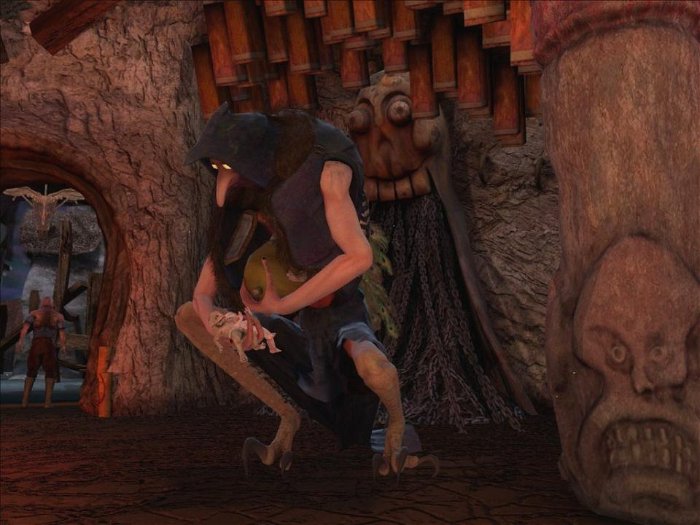
Zeno Clash has an interesting aesthetic – it’s partially inspired by Hieronymus Bosch – and it has an equally interesting story. It turns out that Father-Mother’s secret is that he steals children from their parents and replaces them with animals, and that calls Ghat’s entire existence into question. Who are his parents? What is Father-Mother? Why does he gather more and more children into his family? Would Ghat’s other brothers and sisters rebel if they knew the secret of Father-Mother? The ambiguity makes Zeno Clash unique and it gives the story depth. We learn how Ghat and Father-Mother reached their impasse, but the player never learns how Father-Mother’s family are all connected.
Father-Mother’s children also idolize their assumed parent, so while Ghat was once like them, he’s now on the lam and has a new perspective on his existence and on Zenozoik. Ghat still considers Father-Mother as his father and mother at the end of the story – he even spares Father-Mother’s life – and it makes you wonder about the loyalty of followers and the loyalty of kin. Father-Mother is unable to give birth, but by raising stolen children and assuming the role of father and mother, he created a group of followers that were dependent for survival.
Zeno Clash ultimately forces you to question the very idea of family. During the last sequence of the game, a character called Golem grasps his wrist, which in turns causes Father-Mother, Ghat, and his siblings to grasp their wrists as well. It’s hinted that there’s a connection between all of them that goes deeper than being a family, and regardless of their true origins, they are a cult, a group connected by an invisible strand.
Oro Invictus – Condemned: Criminal Origins, PC, Xbox 360 and PS3 2005.
Oro Invictus, or the “Invisible Voice,” is an ancient cult in Condemned: Criminal Origins and Bloodshot that first appeared in Criminal Origins as shadows behind cracked walls and in other horror-movie tropes. At the end of the game, protagonist Ethan Thomas squares off against the leader of the Oro who were sent to kill him. It’s a brutal fight scene and it shows the player just how grotesque these cultists actually are.
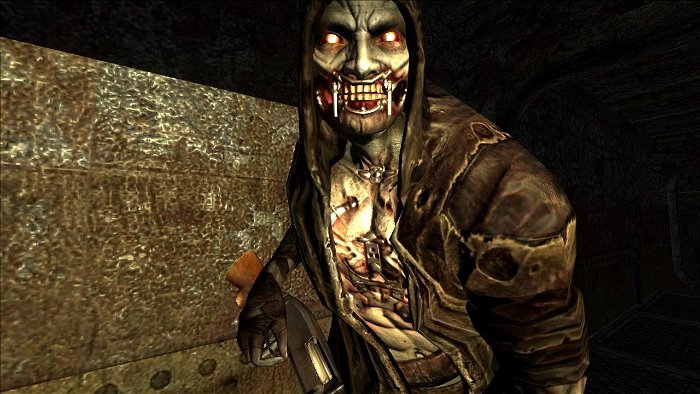
In Condemned: Bloodshot it’s hinted that the Oro may have control of the President of the United States (somehow the President is always involved in these things), but what makes the Oro truly menacing is the ambiguity of their ideology. We never explicitly learn why they’re trying to take over the world, or even if that’s their actual intention. The Oro consequently represent the powers of anarchy and chaos, and forced violence is far more perturbing if you’re not sure why it’s happening.
That’s why Condemned: Criminal Origins makes you feel unease more than terror. When Ethan looks into the face of his opponent, he sees the criminality of the city around him and his own descent into madness. The Oro have the ability to influence people with nothing but their voices, and they seem to exercise that power just because they can. It’s almost as if they’re trying to create an entire society based on fist fighting and drunken brawling, although Ethan Thomas’s appearance in Bloodshot would suggest that that might not be possible.
*Interesting fact: The Oro use a Filipino martial art known as Eskrima. It’s a complicated and flowing martial art that takes – as most martial arts do – years to learn and many more to master.
Smiling Faces – Killer 7, Gamecube and PlayStation 2 2005.
The laugh. If you’ve played Killer 7, you remember the laugh.
On the surface, the Smiling Faces are a terrorist organization that uses violence to create fear. Below the surface, they’re an organization controlled by a single master – Kun Lan – who can use the membership for his own nefarious ends, as in the case of a 2003 attack on the United Nations that results in the deaths of several members. After these events, the world unites under a banner of anti-terrorism and calls in the Killer 7 to combat the Heaven Smile.

In Killer 7, Kun Lan also happens to be a demigod – he’s an incarnation of Mara Papima, a Buddhist demon who represents death and evil – and he can use the God Hand to transform The Heaven Smile into living, walking bombs that only exist to cause terror. Kun Lan’s goal is to reestablish Japan as the leading superpower in the world, but his methods make him a threat even to the Japanese sympathizers in the game.
The Heaven Smile are living clones made from the organs of orphaned children (and you thought that the Father-Mother from Zeno Clash was evil), and while a number of characters help create the Smiles, Kun Lan’s oversight is ultimately what makes them so powerful. With the God Hand, he’s able to hide the Heaven Smile from the eyes of regular people, which means that the Heaven Smile is an international economic and political organization run by a demigod with a limitless supply of invisible, highly explosive, laughing bombs at his disposal. So yeah…they’re one of the more terrifying forces on this list.
As an aside, Killer 7 might actually be the second instance of Kun Lan’s evil influence. Sandance Shot, a character from Flower, Sun and Rain, appeared in a beta trailer for Killer 7 with an item called the Silver Eye that – as explained in Flower, Sun and Rain – is an object that grants immortality and even creates a time spiral when two are in the vicinity of one another. Sandance was taken out of the final version of Killer 7, but it is possible that the power of the Silver Eye combined with that of Kun Lan’s God Hand could have been responsible for the recurring struggle between Harman and Kun Lan and the creation of the Heaven Smile.
Unitology – Dead Space, PC, Xbox and PS3 2008.
The origins of Unitology are shrouded in mystery, but it begins with Michael Altman, a geophysicist who uncovered the Black Marker at Chicxulub crater off the coast of the Yucatan peninsula in Mexico. The marker’s carrier wave caused several researchers to lose their minds, but Altman was unaffected by the wave and the resulting fervour led to the creation of the Church of Unitology. The new followers praised Altman as a kind of deity as he proved the existence of alien life and created the fastest growing religion on Earth.
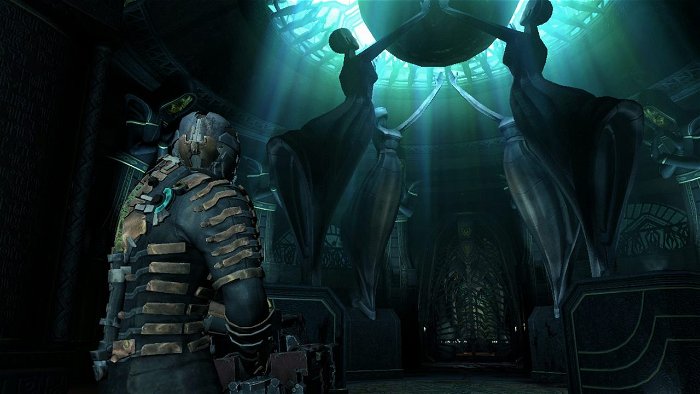
Unfortunately, Unitology also studies the effects of the Black Marker on human beings, and the surface of the marker contains a formula for constructing a recombinant DNA that reanimates dead cells. That “Convergence” process eventually creates the famous Necromorphs in Dead Space. The church initially rejected the Necromorphs as abominations, but Craig Markoff saw the potential of the Marker and martyred Altman, stating that his death would bring a wave of support for the Unitologist cause. That’s pretty much what happens once Markoff spreads rumours that paint Altman’s death as a government assassination.
For Unitologists, the goal is unity, here envisioned as a mass suicide that literally separates humanity from all materialistic obsessions. The scary thing is that the power of the marker actually makes it possible. With that in mind, it’s somehow appropriate that Dead Space is a survival horror game that gives the player limited resources to defeat and dismember enemies. If anyone appreciates the value of materials, it’s protagonist Isaac Clarke. As the game progresses, Isaac immerses himself in technology that stands in direct contrast to the increasingly biological/organic Necromorphs that have taken over the Ishimura, and it’s one of the purest dichotomies you’ll find in gaming.
Los Illuminados – Resident Evil 4, Gamecube and PlayStation 2 2005.
Los Illuminados, or “The Enlightened,” is a cult operating out of a small region of Spain in Resident Evil 4. Way back in the 18th century, they worshipped an organism called “Las Plagas” that was able to take control of its host, although it was sealed after its power was discovered by regents in the area. Fast forward to the 21st century, and Osmund Saddler has excavated the parasite, created living clones, and passed it onto the loyal villagers in a reinvigorated Los Illuminados. Now, Saddler has his eyes set on world domination and hatches a plan that involves the capture, infection, and release of the daughter of the President of the United States. It’s about as harebrained as you can get when it comes to evil master plans, but the Los Illuminados are one of the most technologically savvy cults on the list so they almost manage to succeed.
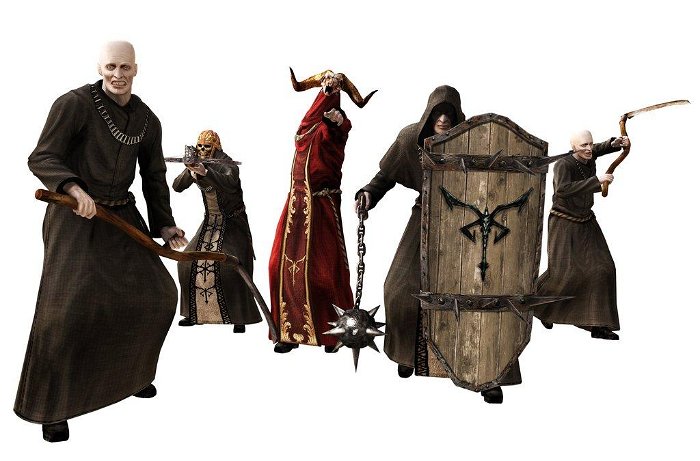
Part of what makes a cult scary is the control they exert over their members. When hero Leon S. Kennedy enters the small village that leads to the local castle, he’s startled to discover that everyone is going about their business, albeit in a weird, Invasion of the Body Snatchers kind of way. It’s disconcerting because the Los Illuminados somehow have complete control over their bodies and a complete lack of control over their own minds.
The Los Illuminados are also unusually inventive. They take villagers, mess around with some genetic code, and create monsters like the Regenerator, the single most terrifying video game enemy of all time (seriously). Where other cults would send another human being to fight you, the Los Illuminados would take that human, shove a Plagas into them, and hope for the best, and the moral disregard for their own followers doesn’t sit right with the player.
Of course, Saddler’s operation is small time when compared to the other forces in Resident Evil – the Umbrella Corporation even steals a sample of Las Plagas – and the Los Illuminados might not even be the true masterminds in RE4. After all, Saddler was the first one to be infected, so who’s to say that it wasn’t the organism doing the thinking all along? Las Plagas are represented as wholly unintelligent creatures, but there could be more going on than we suspect.
The Order – Silent Hill Series, PlayStation 1999.
Silent Hill’s resident cult, the Order, only makes occasional appearances throughout the series, but they still manage to make their presence known even when they’re not around in Silent Hill 2 and Silent Hill 4 through the iconography of the Gods from the Otherworld. These gods include a variety of angels and saints that reinforce a set of beliefs about the commitment and sacrifice required to be a part of the cult, and the promises of paradise usher in the apocalypse when a girl named Alessa is burnt alive and made to suffer so she can give birth to God.
Yes, cults in video games are just as crazy as the ones in real life.
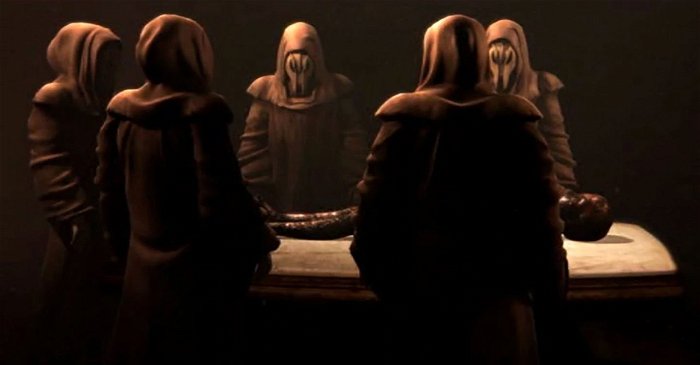
However, it’s that mythos that makes The Order intriguing. Unlike many of the other cults on this list, the Order has a highly developed set of beliefs that adds depth to an enemy that might just be misunderstood or unintentionally evil. After all, the Order’s philosophy is similar to that of many monotheistic religions, and they’re backed up by deadly supernatural forces throughout the Silent Hill series. These gods are real, and not mere psychological manifestations (although James Sunderland from Silent Hill 2 might disagree).
The Order’s influence also isn’t something that you can destroy. The horrors of Silent Hill and the Otherworld are psychological and spiritual, so while a group like the Los Illuminados could bring in cultists, biological abominations, and weapons, they’re powerless when measured against one’s deepest fears made into physical beings. James Sunderland and Angela Orosco share the town in Silent Hill 2, but it manifests its horrors differently for both characters. While James’ Silent Hill is filled with fog that represents his lost memory and creatures like Pyramid Head that represent his suppressed sexuality, Angela’s Silent Hill is filled with fire that represents her own self-hatred and pain.
The Order have cultivated an understanding of the transformative properties of the town, and they know how to take advantage of it for maximum effect. Will it lead them to paradise? Well, that’s kind of relative when one person’s paradise is filled with rainbows while another’s is filled with rust, blood, and straight-jacket monsters.
The Advent – Sin of a Solar Empire, PC 2009.
Before the establishment of the galactic Trade Order, a sect of humans called The Advent escaped from the wars that were consuming the human frontier to establish a new home world and develop a collective mentality called “The Unity.” When Trade Order missionaries landed on the Advent home planet, they were shocked by what they found. Exiled for thousands of years on barren desert worlds and out to fulfill a destiny of conquest, the Advent have returned and they are a force to be reckoned with.
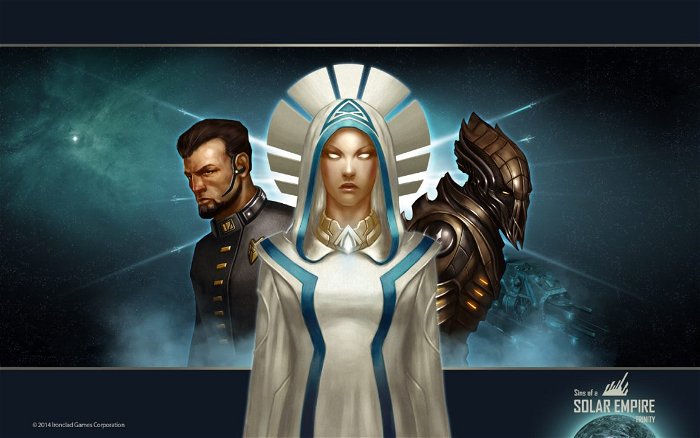
The Advent integrated their exile into the myths and lore of their culture, eventually coming to believe that they can claim rightful ownership of the universe, and they’re dangerous because they have the power to back it up. The Advent has control over entire worlds, solar systems and galaxies, and as a religious order, their mandate demands that they bring as many people as possible into their fold. That structure also makes them a uniquely challenging opponent. Most enemies are vulnerable to physical weapons, but when the threat is a galactic civilization brought up to hate everything about your culture, then you have a problem.
The Advent’s main super weapon is called the Deliverance Engine. When activated, the Engine sends a wave of energy to an enemy planet that causes the population to rebel against their leaders, and unlike the game’s two other races, the TEC and the Vasari, the Advent’s culture is pervasive on almost every level. They forcibly subjugate planets and bring them into the Unity with telepathic links and cybernetic technology, and it’s Borg-style retribution for the damage that was inflicted on the Advent’s collective psyche during their exile. The Advent are looking to bring peace to humanity through The Unity, and they don’t care if they have to take away free will in order to make that happen.
Brotherhood of Nod – Command and Conquer Series, PC 1995.
“Peace Through Power!”
Few video game cults have leaders embodied by real-life actors and Joseph D. Kucan – who portrays Nod’s absolute leader Kane – has his act down. The Brotherhood of Nod has a history dating back to the 1800 b.c., but in 1995 Nod rose to power after the arrival of an extraterrestrial substance known as Tiberium. Tiberium is a heavy, ferrous element that leeches minerals from other in-ground metals in its surroundings. The mineral crystallizes above ground, which makes it easily harvested with specialized equipment. The Nod mantra, the Nod philosophy, and the Nod drive for world domination revolve around the use and proliferation of the valuable mineral.
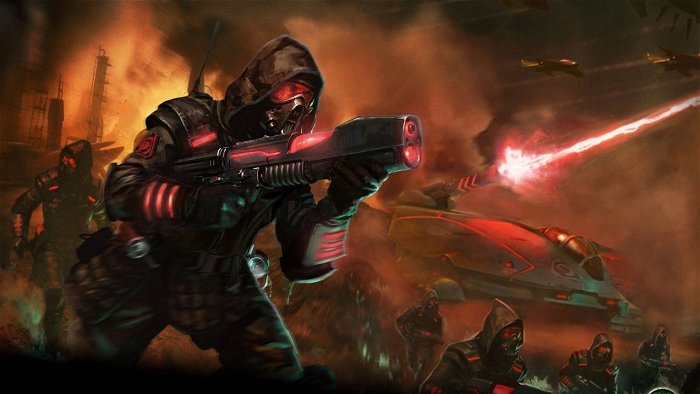
The most awe inspiring aspect of the Brotherhood of Nod is their undying devotion to Kane and his tenets. Kane is believed to be an extraterrestrial entity who arrived on Earth thousands of years ago, and from the very outset of recorded history, Kane – under several aliases – has been secretly leading the world’s powers to one single event: Ascension. “Peace Through Power!” is the central doctrine of the Brotherhood, and to achieve this, Kane uses Tiberium to unify the developing nations of Earth. The third world countries suddenly become major economic, political, and military forces striving for peace, unity and brotherhood, and rivalries with former global superpowers lead to the first Tiberium war and the three subsequent conflicts that left the Earth barren.
Here’s an excerpt from a document from the First Tiberium War that describes the Nod Philosophy:
With the unstoppable growth of Tiberium across the Globe, most of it occurring in nations friendly to the Brotherhood, our time has come. The vast wealth and resources gained from Tiberium have given us the ability to come into the open and challenge our antagonists face to face. Across the Globe, GDI and Nod forces now clash in a titanic struggle that will decide the fate of mankind for all time. The GDI hides behind the façade that they are here to help the free nations in their struggle against those they would name terrorist. We in the Brotherhood know the truth. Our fight is for all mankind, not for those cherished few.
Nod stands apart from the rest of the list because of the Brotherhood’s perseverance in the face of defeat. Many sects opposed Kane over the years, but they’ve all been quashed and Kane even leads his followers to Ascension by taking them through a Scrin portal at the end of Command and Conquer 4. Some may have seen the game as a poor final chapter, but while many video game cult leaders make promises of world domination, happiness, and eternal life, only one of them was able to deliver. We’re only left to wonder about the fates of Kane and his followers.
***
Whether it’s brotherhood, unity, anarchy, family or the color blue, cults are held together with a set of beliefs and cultists flock – sometimes forcibly – to charismatic leaders because they’re hoping to get something out of their lives. Knowing that, it’s hard to say if all the cults on this list are really bad guys – some of them might just be a little misguided – but I can definitely say that being a cultist seldom ends well in a video game. Unless you’re in the Brotherhood of Nod, you’re more likely to be a final boss than the hero.
